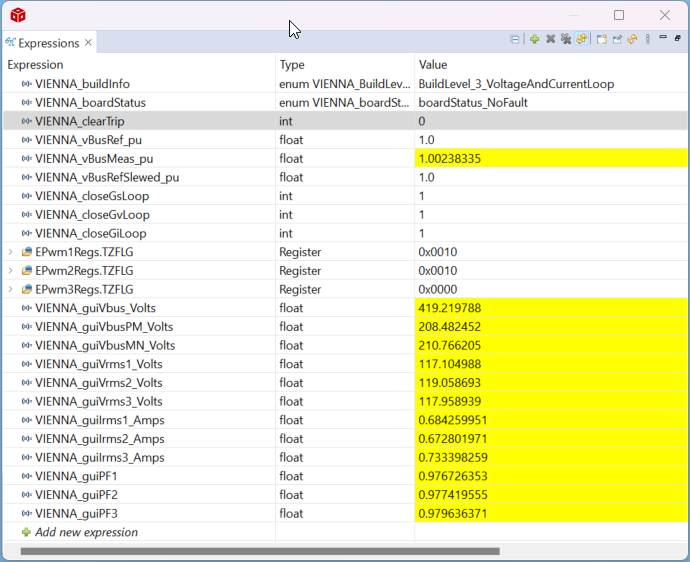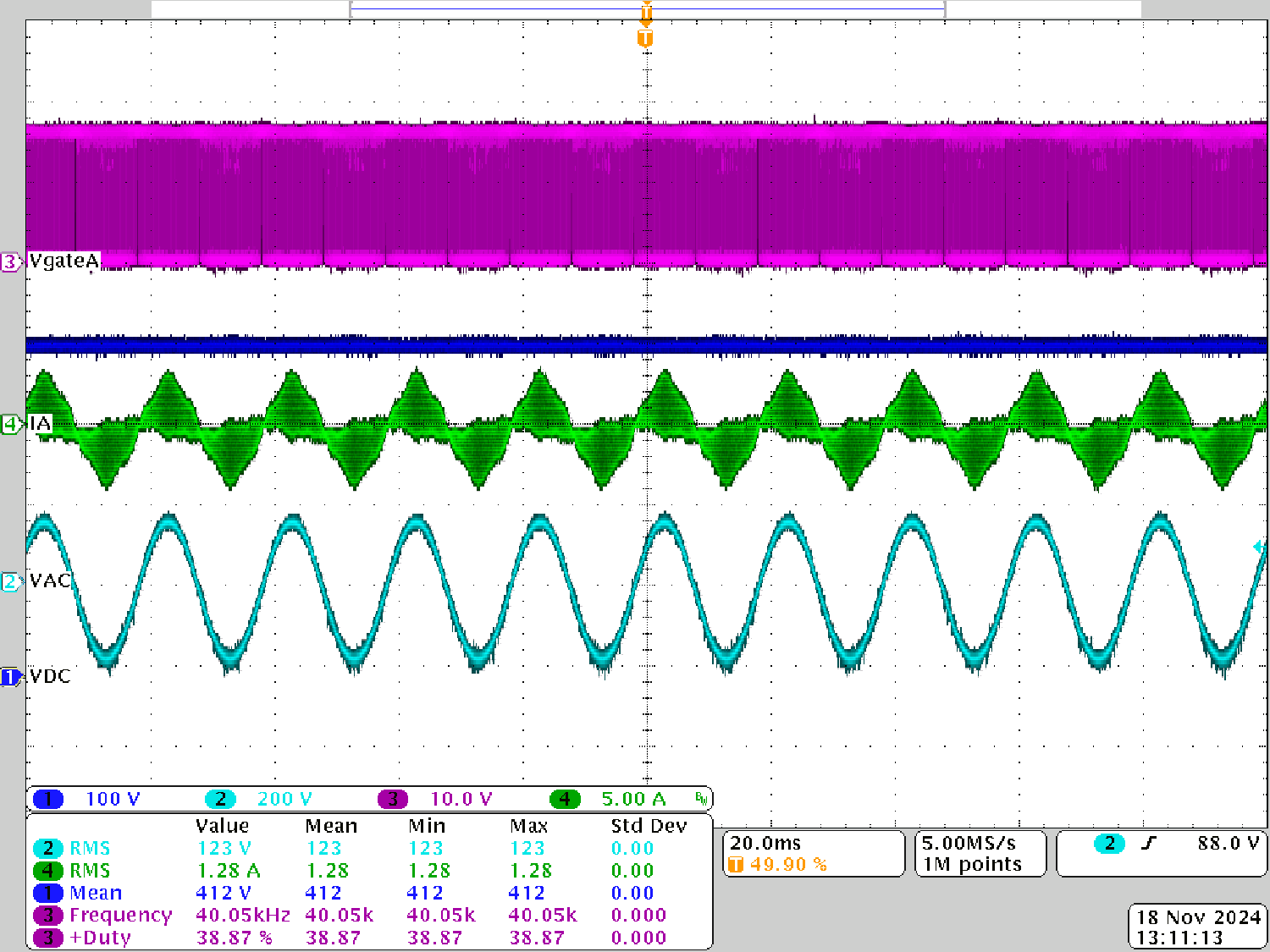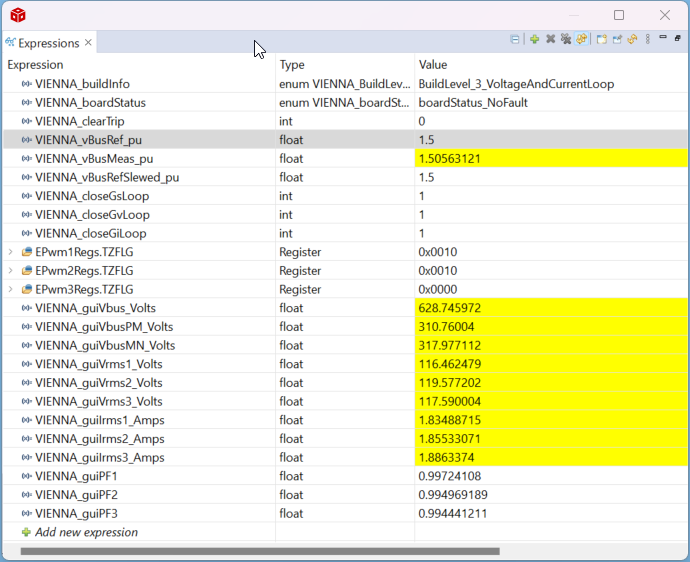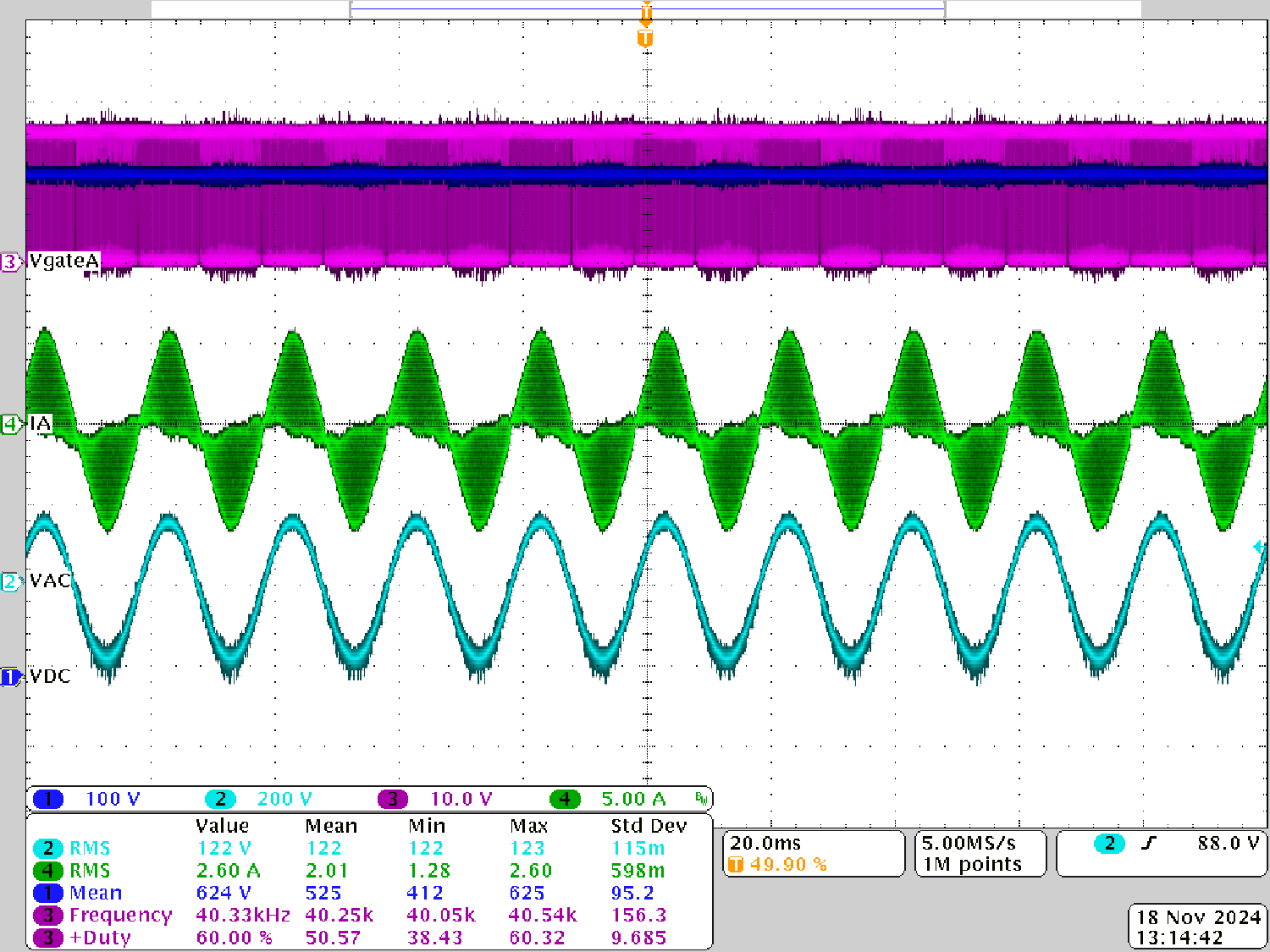TIDUFB1 December 2024
- 1
- Description
- Resources
- Features
- Applications
- 6
- 1System Description
-
2System Overview
- 2.1 Block Diagram
- 2.2 Design Considerations
- 2.3 Highlighted Products
- 2.4
Hardware Design
- 2.4.1 Inductor Design
- 2.4.2 Bus Capacitor Selection
- 2.4.3 Input AC Voltage Sensing
- 2.4.4 Output DCBUS Voltage Sensing
- 2.4.5 Auxiliary Power Supply
- 2.4.6 Isolated Power Supply
- 2.4.7 Inductor Current Sensing
- 2.4.8 Gate Driver
- 2.4.9 Isolated Temperature Sensing
- 2.4.10 Overcurrent, Overvoltage Protection (CMPSS)
-
3Hardware, Software, Testing Requirements, and Test Results
- 3.1 Hardware Requirements
- 3.2
Software Requirements
- 3.2.1 Getting Started GUI
- 3.2.2
Getting Started Firmware
- 3.2.2.1 Opening the Project Inside Code Composer Studio™
- 3.2.2.2 Project Structure
- 3.2.2.3 Test Setup
- 3.2.2.4 Running Project
- 3.3
Test Results
- 3.3.1 IGBT Gate Rising and Falling Time
- 3.3.2 Power On Sequence
- 3.3.3 PFC Started by GUI
- 3.3.4 Zero Crossing Under 380VAC, 9kW
- 3.3.5 Current Ripple Under 380VAC,10kW
- 3.3.6 10kW Load Test With Grid Power
- 3.3.7 9kW Load Test With AC Power Source
- 3.3.8 Power Analyzer Results
- 3.3.9 Thermal Performance
- 3.3.10 Voltage Short Interrupt Test
- 3.3.11 Efficiency, iTHD, and Power Factor Results
- 4Design and Documentation Support
- 5About the Author
3.2.2.4.3.2 Running Code (Build 3)
- Run the project by clicking the
 button.
button. - Raise the input AC voltage to 120VRMS VL-N or 208VRMS VL-L, 50Hz.
- The DC voltage reference is set by the
vBusRefvariable. This value is set to as 1.0, which corresponds to 420V for this design. - Clear the trip by setting the
clearTripvariable to 1. The bus voltage then rises to be 420V. - Closed loop operation can be verified by comparing the
vBusRefandvBusMeasin the expressions window as Figure 3-24 shows. Figure 3-24 Build Level 3:
Expressions Window With Vref = 1.0
Figure 3-24 Build Level 3:
Expressions Window With Vref = 1.0 - Figure 3-25 shows the input voltage and current waveforms.
 Figure 3-25 Build Level 3: Scope Capture Ia and Va (120VRMS L-N) With Vref = 1.0
Figure 3-25 Build Level 3: Scope Capture Ia and Va (120VRMS L-N) With Vref = 1.0- CH1 (Blue): DCBUS output voltage
- CH2 (Light blue): AC input phase A voltage
- CH3 (Pink): IGBT gate voltage
- CH4 (Green): AC Input phase A current
- Now raise
vBusRefto 1.5 step by step, the bus voltage is raised to 630V, thevBusRefandvBusMeasvariables appear in the Expressions window as Figure 3-26 shows.Figure 3-25 shows the input voltage and current waveforms. Figure 3-26 Build Level 3:
Expressions Window With Vref = 1.5
Figure 3-26 Build Level 3:
Expressions Window With Vref = 1.5 Figure 3-27 Build Level 3: Scope Capture Ia and Va(120VRMS L-N) With Vref=1.5
Figure 3-27 Build Level 3: Scope Capture Ia and Va(120VRMS L-N) With Vref=1.5- CH1 (Blue): DCBUS output voltage
- CH2 (Light blue): AC input phase A voltage
- CH3 (Pink): IGBT gate voltage
- CH4 (Green): AC Input phase A current
- To bring the system to a safe stop, bring the input AC voltage down to zero,
observe the
guiVBusvariable comes down to zero as well. - Fully halting the MCU when in real-time mode is a two-step process. First halt the
processor by using the Halt button on the toolbar (
 ) or by using
Target > Halt. Next, take the MCU out of real-time mode by
clicking on the
) or by using
Target > Halt. Next, take the MCU out of real-time mode by
clicking on the  board.
Finally, reset the MCU (
board.
Finally, reset the MCU ( ).
). - Close the CCS debug session by clicking on Terminate Debug Session (Target >
Terminate all).
